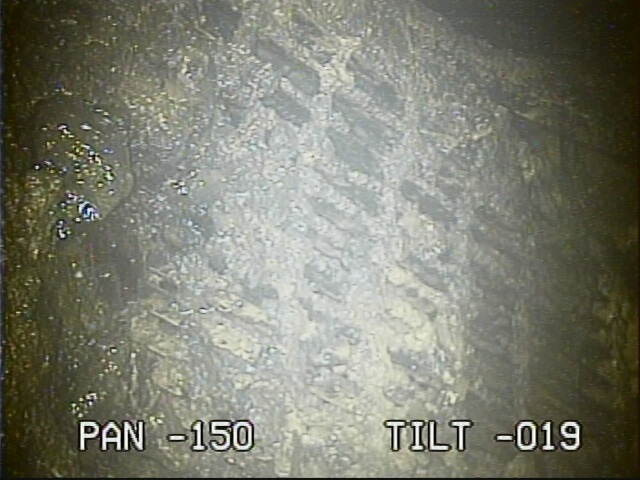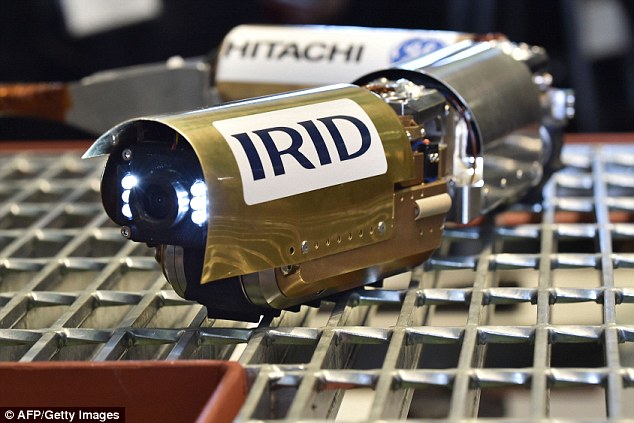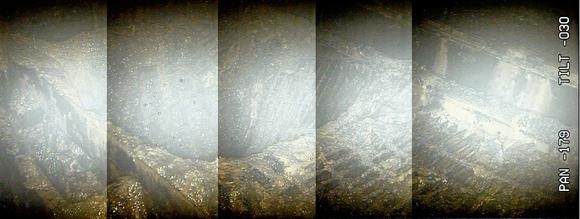New Radiation Readings in Fukushima Reactor 2 Are ‘Unimaginable,’ Lethal in 1 Min.

(EnviroNews World News) — Fukushima Prefecture, Japan — On February 2, 2017, radiation levels in the Reactor 2 vessel at the crippled Fukushima Daiichi No. 1 power plant in eastern Japan, were measured at the highest levels since the triple reactor core meltdowns on March 11, 2011, The Japan Times has reported.
Readings reached a maximum of 530 sieverts per hour the plant’s operator Tokyo Electric Power Company (TEPCO) said last Thursday. The levels are so high that even robots, specially designed to handle colossal amounts of radioactivity while taking readings, cannot withstand the mind-boggling emissions for more than two hours without suffering complete collapse.
530 sieverts dwarfs the previous record of 73 sieverts per hour measured in Reactor 2 in 2012, and experts say it is likely radiation levels are even higher in areas TEPCO has not yet been able to reach. Some nuclear experts have called the newly measured peaks “unimaginable,” as cleanup efforts approach a sixth dismal year.
The red-hot reading was taken robotically near an entry point to the space below the pressure vessel by analyzing electronic noise, caused by radioactivity, on video footage captured by the droid. TEPCO concedes the method has a 30 percent margin of error, but the findings indicate that damaged fuel, turned molten during the meltdowns, has made its way near the entry space. TEPCO said radiation, as of yet, is not escaping the structure.
Of concern, TEPCO also added that remote cameras have detected a two-meter hole in a grate underneath the pressure vessel, which the company also said appears to be warped.
To put 530 sieverts per hour in perspective, according to the U.S. Nuclear Regulatory Commission (NRC), the average American receives a dose of about 620 millirems of ionizing radiation in a whole year, from naturally occurring background, comic rays, radon gas and other sources. 620 millirems is equal to 0.0062 sievers — and remember, that’s in a whole year. The levels in Reactor 2 are presently so high, that entering the area for only one minute would mean almost certain death.
The Guardian reports, “A single dose of one sievert is enough to cause radiation sickness and nausea; 5 sieverts would kill half those exposed to it within a month, and a single dose of 10 sieverts would prove fatal within weeks.”
The Japan Times writes, “An official of the National Institute of Radiological Sciences said medical professionals have never considered dealing with this level of radiation in their work.”

The astronomical readings bring major concerns to a cleanup operation already spiraling out of control — flying blindly into territory previously uncharted in the history of nuclear power. Late last year in an official announcement, the estimated cost of the cleanup for Fukushima Daiichi was doubled to a whopping $200 billion, for a project projected to take as long as a century to complete.
To top it off, 530 sieverts per hour might not be the worst cleanup workers have to worry about. TEPCO also stated that surface-level radiation readings from parts inside the plant’s pressure vessels can reach “several thousand sieverts per hour,” compounding what are already seemingly unsurmountable tasks in the decommissioning process.

Esteemed nuclear expert, engineer, and former reactor operator Arnie Gundersen told EnviroNews World News in an email that the position of Fairewinds, his educational non-profit, is that radiation levels are presently way to high to remove the melted fuel, and that the reactors should be entombed, like was done with Chernobyl’s sarcophagus, for at least a century before attempting dismantlement. “[These readings do] make dismantling the facility almost impossible for 100 or more years, as the exposure to workers would be too significant,” Gundersen said.
To many environmentalists, of even greater concern than the levels themselves, is the fact the melted cores breeched containment and are contaminating groundwater — water that is continuously seeping out to sea, taking myriad radioactive isotopes with it as it poisons aquatic life and the food chain.
“There are no easy solutions, since groundwater is in direct contact with the nuclear corium (melted fuel) at Fukushima,” Gundersen said. “The important issue for the Japanese (and the world) to accomplish is to stop the groundwater from entering the damaged containment, and thus leaking out into the Pacific; to trap this radiation inside the damaged containment as happened at Chernobyl. Stopping the groundwater from entering, sealing in the radiation, and waiting 100-plus years to dismantle the reactors has always been the Fairewinds recommendation.”
In other developments of TEPCO’s Reactor 2 vessel survey: The company announced on January 30, 2017, that in another probe, deployed with a camera on a telescopic arm, a black blob was discovered on the grating directly underneath the pressure vessel. TEPCO suspects this could be part of the melted fuel core. If that’s the case, and the deposits are indeed melted fuel, this would represent the first time since the melt-throughs occurred nearly six years ago that TEPCO has located any fragments of the runaway cores.
It is surmised that all three reactor cores at Fukushima melted through their pressure vessels, and either pooled at the bottom of their containment vessels, or melted through those as well. The actual state of the melted fuel is unknown because radiation levels are too high to survey it. Further analysis of the structure revealed the aforementioned two-meter hole in the grating.
MORE ON FUKUSHIMA FROM ENVIRONEWS
It’s Finally Here: Radioactive Plume From Fukushima Makes Landfall on America’s West Coast
(EnviroNews Oregon) – Tillamook County, Oregon – Seaborne cesium 134, the so-called “fingerprint of Fukushima,” has been detected on US shores for the first time researchers from the Woods Hole Oceanographic Institution (WHOI) said this month. WHOI is a crowd-funded science seawater sampling project, that has been monitoring…
Nuclear Hogs: Radioactive Wild Boars Running Amok Around Fukushima; Hunters Deployed
(EnviroNews World News) – Fukushima Prefecture, Japan – Radioactive wild boars are running amok near the crippled Fukushima Daiichi power plant on the eastern coast of Japan. The animals have migrated down from the mountains into the virtual ghost towns surrounding the site of the world’s worst nuclear…
Fukushima Robot Fried Again, But Confrims Astronomical Radiation, Cleanup Impossible for Decades
(EnviroNews World News) – Fukushima Prefecture, Japan – Dismantling the crumpled reactors and recovering the melted fuel at the crippled Fukushima Daiichi power plant in eastern Japan now relies on technology that hasn’t even been invented yet, as Tokyo Electric Power Company (TEPCO) flies blindly into an abyss…
Seaborne Fukushima Radiation Plume Hits West Coast – How the Media Reported it Dangerously Wrong
(EnviroNews DC News Bureau) – “It is not a question any more: radiation produces cancer, and the evidence is good all the way down to the lowest doses,” says the late Dr. John Gofman, Professor Emeritus at the University of California, Berkley, in his book Nuclear Witnesses: Insiders…
Editorial: 5 Yrs. Later, TEPCO Finally Admits It Lied To The World About Fukushima Meltdowns
(EnviroNews World News) – Fukushima Prefecture, Japan – EDITORIAL: THE TRUTH: Tokyo Electric Power Company (TEPCO) knew within hours following the 3/11/11 tsunami that a full-scale, multi-reactor nuclear meltdown was underway. THE LIE: TEPCO waited nearly two months to inform the public. Those were the staggering admissions handed…
BUSTED: Former TEPCO Bosses Indicted For Deadly Negligence in Fukushima Meltdowns
(EnviroNews World News) – Nearly five years after the tsunami and subsequent triple nuclear reactor meltdown that rocked Fukushima Daiichi in eastern Japan, for the first time, criminal charges have been filed, in what is still unfurling as arguably the worst manmade environmental disaster in history. Three…
Radioactive Water Pileup Problem Still Festering at Fukushima: 1106 Tanks and Counting
(EnviroNews World News) – A new photo released this week starkly demonstrates how severe the radioactive water storage crisis on the ground at Fukushima Daiichi really is. Published in The Asahi Shimbun , the aerial photo shows a scene resembling that of a “giant integrated circuit board”…
FILM AND ARTICLE CREDITS
- Emerson Urry - Journalist, Author


![Leading the Charge for America’s Wild Horses on Capitol Hill: NBA/NFL Celeb. Bonnie-Jill Laflin: ‘[Politics] won’t stop us from fighting’](https://cf-images.us-east-1.prod.boltdns.net/v1/static/1927032138001/f46b2158-cead-47f0-ab44-4b027059411a/4e4afcf2-937d-4a9d-acba-1b82e2efd4c6/160x90/match/image.jpg)



2 thoughts on “New Radiation Readings in Fukushima Reactor 2 Are ‘Unimaginable,’ Lethal in 1 Min.”